Holger Erdtman (1902-1989)
A brief biographical sketch by Torbjörn Norin
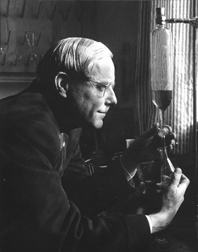
In 1945, Holger Erdtman was appointed to the professor of organic chemistry of the Royal Institute of Technology (KTH) where he, after his retirement in 1969, for many years remained active as an emeritus professor.
Erdtman studied chemistry, botany and zoology for a 'filosofie ämbets-examen' (corresponding to a B.Sc.) at the Stockholm University, at that time 'Stockholms Högskola'. After graduation (1926), he continued to do research in chemistry for a licentiate's degree (corresponding to a Ph.D.) in the laboratory of Professor Hans von Euler at the same university.
The young man quickly made an important discovery. He identified the activation factor of bovine phosphatase. He later told of his disappointment in this discovery, because the activation factor was found to be Mg2+, not an organic compound! One may speculate what kind of career he would have had as a biochemist!
As a young student, Holger Erdtman was already clear about his wishes to become an organic chemist and to study the chemistry of natural products. This important branch of chemistry was hardly represented in Sweden at that time. The subject of his thesis work was the chemistry of humic acids and other products derived from oxidative phenolic couplings. He went abroad for studies and research and the main part of his earlier research was done while he was a Ramsay-fellow with Professor Sir Robert Robinson in England (1929-1931). He completed the thesis work during the autumn of 1931 in the laboratories of Professors Fridrich Fichter in Basel and Ernst Späth in Vienna.
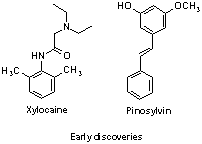
The years with Sir Robert Robinson became most important and determining for Erdtman's future work. Sir Robert and Holger Erdtman became good friends and kept close contacts in the years that followed.
Extensive studies on humic acids and related phenolic compounds led Erdtman to some original and important observations on oxidative phenolic couplings. Structural studies of the coupling product of isoeugenol led him to the hypothesis that lignin was a dehydrogenation product of coniferyl alcohol. These early investigations made by Erdtman were of fundamental importance for the understanding of the biosynthesis of lignins, lignans, lichen depsidones, some alkaloids and many other natural products.
In 1933, Holger Erdtman became a research associate of Professor Hans von Euler of the Stockholm University. During this time, he studied variuos aspects of the alkaloid gramine. This work led, by coincidence, to the discovery of a new group of local anaesthetics. The discovery was made because of the habit of Holger Erdtman to taste compounds that he prepared.
Before being appointed professor of organic chemistry at KTH, Holger Erdtman worked as a research fellow of the Swedish Forest Products Laboratory (STFI). During this time he solved an old problem. He could provide an explanation why it is not possible to use pinewood in sulfite pulping, whereas this pulping method works very well when other wood species are used. He showed that a compound in the heartwood of pine, which he isolated and named pinosylvin, reacted with lignin in the sulfite process and formed insoluble products.
The discovery of pinosylvin initiated Erdtman's most extensive research efforts. He became aware of the taxonomic significance of pinosylvin and other phenolic constituents of pines. This observation started a long series of studies in the field of chemotaxonomy and Erdtman became one of the pioneers in this field. This research led not only to chemotaxonomic results, but also to fundamental achievements in natural product chemistry. He and his co-workers isolated and determined the structures of a number of compounds, some of which belonged to novel structural types.

Particularly important was the investigation and structural elucidation of conifer tropolones. The fundamental importance of this work was recognized not only by natural product chemists, but also by theoretical chemists.
The list of important conifer constituents, the structures of which have been elucidated by Erdtman and his co-workers includes many well-known compounds of essential oils and oleoresins. Other research activities, which Erdtman took up include synthetic plant hormones, synthetic nicotine analogues, pollen constituents, and lichen extractives. Furthermore, he initiated fruitful collaboration with botanists, plant physiologists, and entomologists, which resulted in valuable information on the properties of some plant constituents.
As an emeritus professor, Erdtman started a new research project based on his knowledge and experience of phenolic compounds and oxidative phenolic couplings. He and his co-workers developed synthetic methods for complex dibenzofurans and macrocyclic phenol/aldehyde condensation products. He was fascinated by the properties of the macrocyclic compounds, some of which later became most interesting for the development in the fields of host/guest chemistry and supramolecular chemistry.
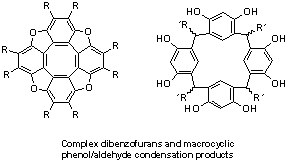
Holger Erdtman was not only a well-known organic chemist, but also a skilful lecturer in scientific as well as in popular contexts. He was a popular teacher and mentor, who generously shared his knowledge, experience, and ideas. His lively interest in science fascinated his students and colleagues, and he had a great number of co-workers from all over the world. Holger Erdtman was a man of vision with great charm and personality.
Holger Erdtman expressed a keen interest for promoting contacts between chemists from all parts of the world and he was engaged in work for IUPAC. He was the president of the IUPAC Division of Organic Chemistry during the years 1959-1963. He was one of the pioneering advocates for arranging IUPAC symposia on the chemistry of natural products, the first of which was held in Australia in 1960. He participated in many of the symposia that followed and he was the president of the symposium in Sweden in 1966.
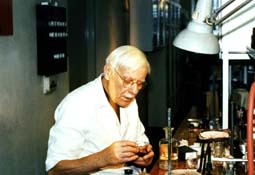
Holger Erdtman received many marks of honour. In 1956 he was invited to deliver the Karl Folkers Lecture at the University of Illinois and the University of Wisconsin. In 1957 the Chemical Society in London awarded him the Flintoff Medal and Proze in recognition of his contributions encompassing the fields of chemistry and biology. He was also awarded the prestigious Arrhenius medal of the Royal Swedish Academy of Sciences and the education medal (Pedagogmedaljen) as well as the Bror Holmberg medal of the Swedish Chemical Society. Holger Erdtman was a fellow of the Royal Swedish Academy of Sciences, the Royal Swedish Academy of Engineering Sciences, and the Royal Swedish Academy of Forestry and Agriculture. He was a member of the Editorial Board of the journal Phytochemistry since it was founded in 1961 and he asked for 'retirement' in 1986. He was also an active member of the Advisory board of Tetrahedron and associated journals.
Nature was not only the root of Erdtman's ideas and conceptions - it was also his foremost source of recreation. He and his wife, Gunhild Aulin-Erdtman, who was also his fellow colleague for over 50 years, were as familiar with the forests close to their summer home, Hasselbacken, as with the rain forests of Borneo.
Their home has always been - and still is - open to co-workers, students, and friends from all over the world. Their sincere interest promoting science and research in organic chemistry is expressed by their generous donation to KTH for a foundation, the Aulin-Erdtman foundation, to support scientific exchange.
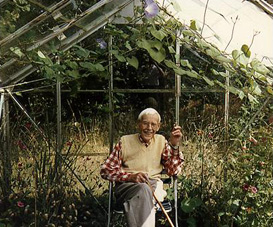
This text is based on an article by Torbjörn Norin in Phytochemistry 28, 1713 (1990).
